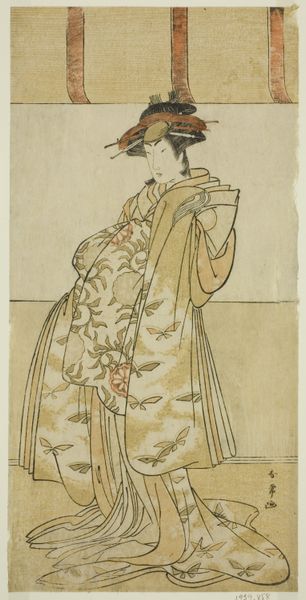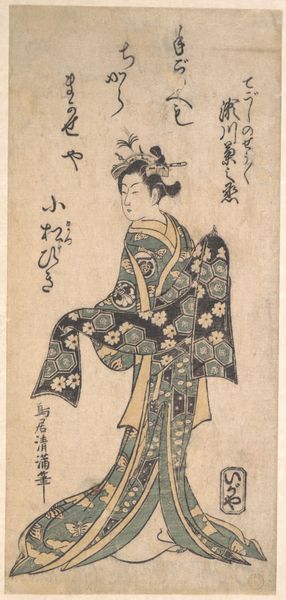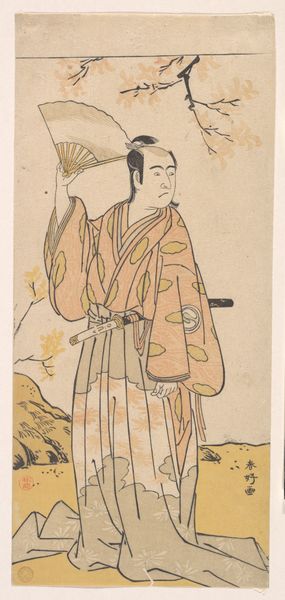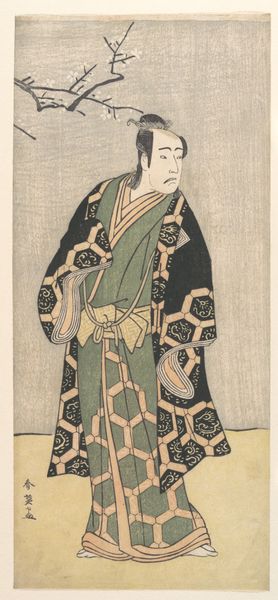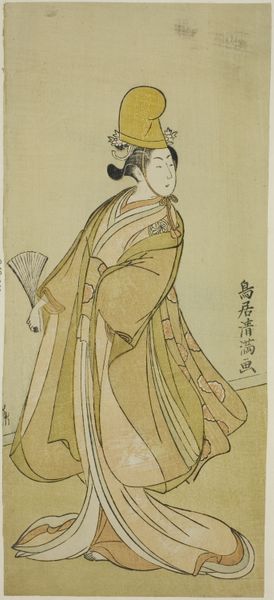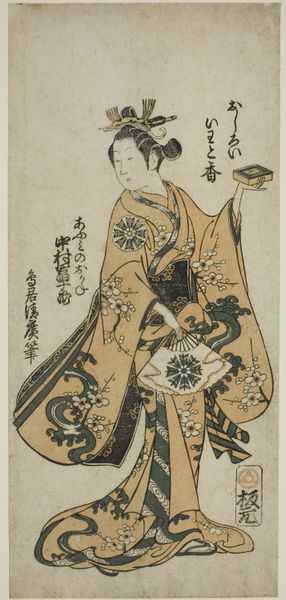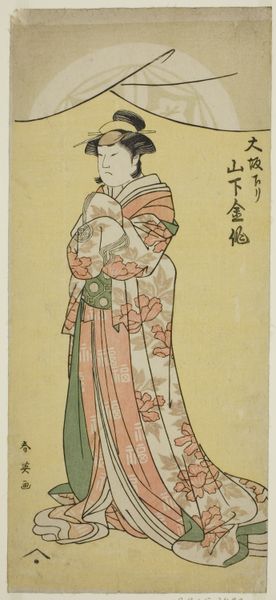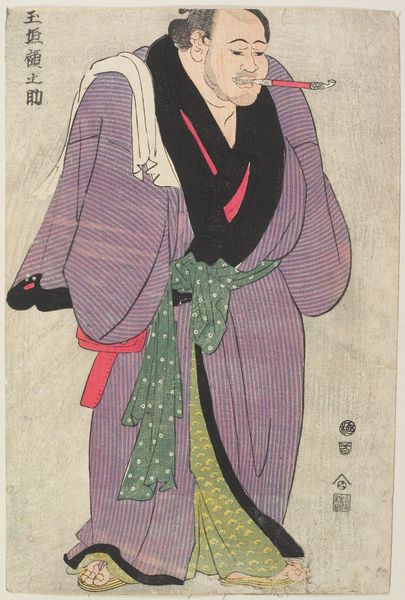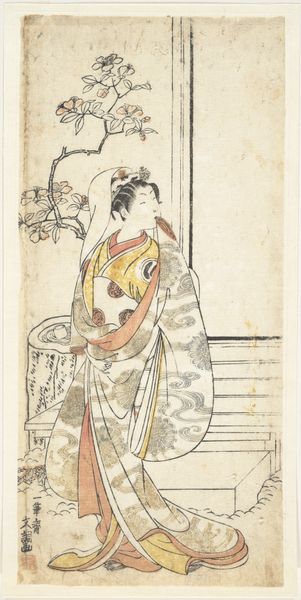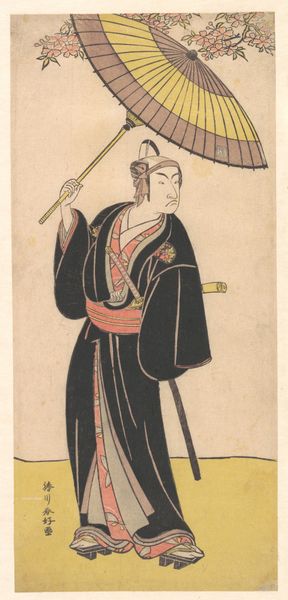
Bandō Hikosaburō III in the Role of Sugawara no Michizane 1786 - 1806
0:00
0:00
#
portrait
# print
#
asian-art
#
ukiyo-e
Dimensions: 15 x 10 in. (38.1 x 25.4 cm)
Copyright: Public Domain
Editor: Here we have Utagawa Toyokuni I's print of "Bandō Hikosaburō III in the Role of Sugawara no Michizane," dating between 1786 and 1806. It's an interesting portrait. The subject has quite a stern expression and seems to be glancing off to the side, away from the viewer. How do you interpret this work, especially considering the period it was created in? Curator: That stern expression, precisely! Let's unpack it. Toyokuni's ukiyo-e prints weren't simply capturing likeness; they were actively constructing identities, particularly within the strict social hierarchies of Edo-period Japan. We're seeing more than just a Kabuki actor; we're seeing the role intersecting with expectations about class, masculinity, and perhaps even political dissent, carefully coded for a specific audience. Think about how this image would circulate, and what messages a contemporary viewer would receive from it. What do you notice about the way he is holding the fan? Editor: I hadn't considered that it was about sending specific messages. The way he’s holding the fan, almost daintily, seems to clash a little with his otherwise serious demeanour. Curator: Exactly. That contrast is key. How does this supposed “dainty” action interact with our understanding of masculinity in that period? Perhaps it challenges, subverts, or even reinforces certain power dynamics within the theatrical space and beyond. Consider that Kabuki theatre itself was a contested space, a place where social commentary could be masked within entertainment. This is particularly true when we look into the story of Sugawara no Michizane, the scholar and poet that Bandō Hikosaburō III is portraying. This historical figure became a symbol for political oppression in popular culture. How does this shift the interpretation of the work for you? Editor: That's fascinating. So the print operates on multiple levels – documenting, performing identity, and even offering social critique? Thinking of the theatre as a public sphere where certain stories or messages may be veiled behind characters is quite compelling. Curator: Precisely! It shows us how deeply intertwined art is with the political, social, and cultural currents of its time, a testament to the ever present intersectional narratives imbedded in portraiture. Editor: I definitely have a new appreciation for ukiyo-e prints! I'll be looking at these with more intention going forward.
Comments
No comments
Be the first to comment and join the conversation on the ultimate creative platform.
